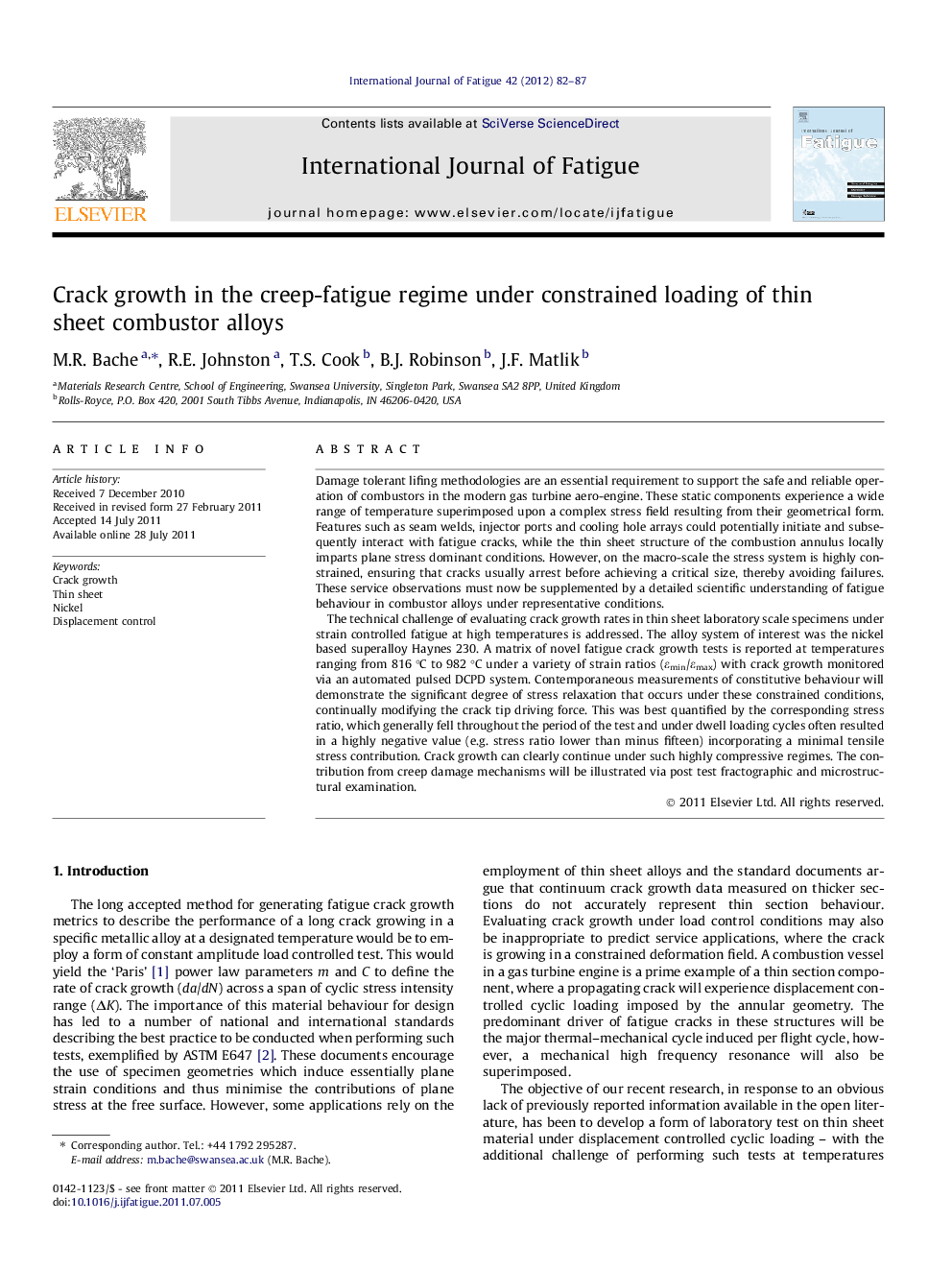| کد مقاله | کد نشریه | سال انتشار | مقاله انگلیسی | نسخه تمام متن |
|---|---|---|---|---|
| 781050 | 1463790 | 2012 | 6 صفحه PDF | دانلود رایگان |

Damage tolerant lifing methodologies are an essential requirement to support the safe and reliable operation of combustors in the modern gas turbine aero-engine. These static components experience a wide range of temperature superimposed upon a complex stress field resulting from their geometrical form. Features such as seam welds, injector ports and cooling hole arrays could potentially initiate and subsequently interact with fatigue cracks, while the thin sheet structure of the combustion annulus locally imparts plane stress dominant conditions. However, on the macro-scale the stress system is highly constrained, ensuring that cracks usually arrest before achieving a critical size, thereby avoiding failures. These service observations must now be supplemented by a detailed scientific understanding of fatigue behaviour in combustor alloys under representative conditions.The technical challenge of evaluating crack growth rates in thin sheet laboratory scale specimens under strain controlled fatigue at high temperatures is addressed. The alloy system of interest was the nickel based superalloy Haynes 230. A matrix of novel fatigue crack growth tests is reported at temperatures ranging from 816 °C to 982 °C under a variety of strain ratios (εmin/εmax) with crack growth monitored via an automated pulsed DCPD system. Contemporaneous measurements of constitutive behaviour will demonstrate the significant degree of stress relaxation that occurs under these constrained conditions, continually modifying the crack tip driving force. This was best quantified by the corresponding stress ratio, which generally fell throughout the period of the test and under dwell loading cycles often resulted in a highly negative value (e.g. stress ratio lower than minus fifteen) incorporating a minimal tensile stress contribution. Crack growth can clearly continue under such highly compressive regimes. The contribution from creep damage mechanisms will be illustrated via post test fractographic and microstructural examination.
► Creep-fatigue crack growth behaviour in Haynes230 Nickel superalloy.
► Creep-fatigue interactions under dwell fatigue loading at extreme temperatures.
► Significant stress relaxation encouraged by increasing temperature and dwell time.
► Crack growth persists despite generating a high negative stress ratio with minimal tensile stress.
Journal: International Journal of Fatigue - Volume 42, September 2012, Pages 82–87